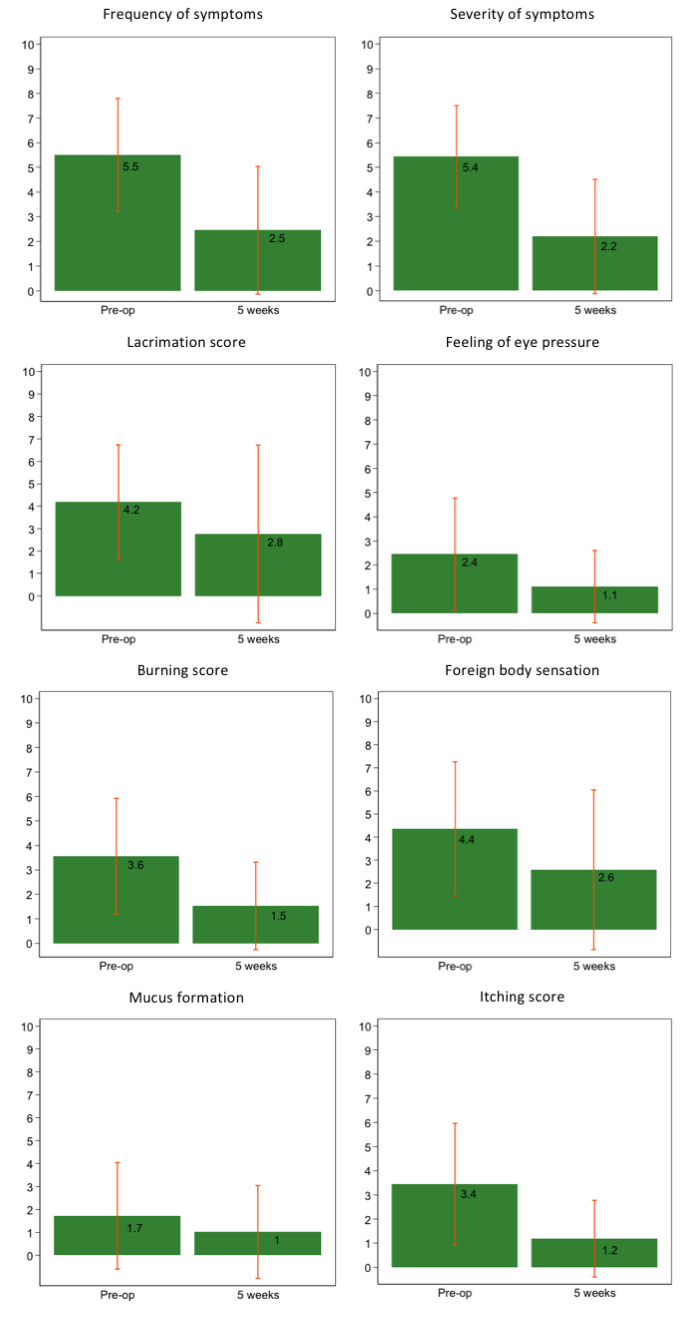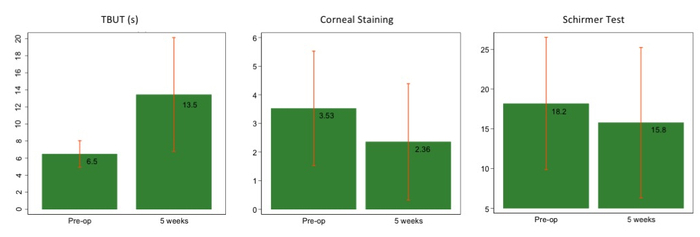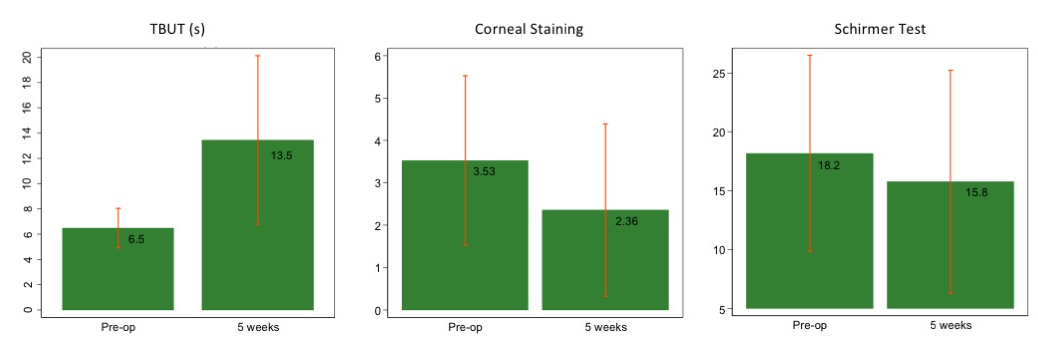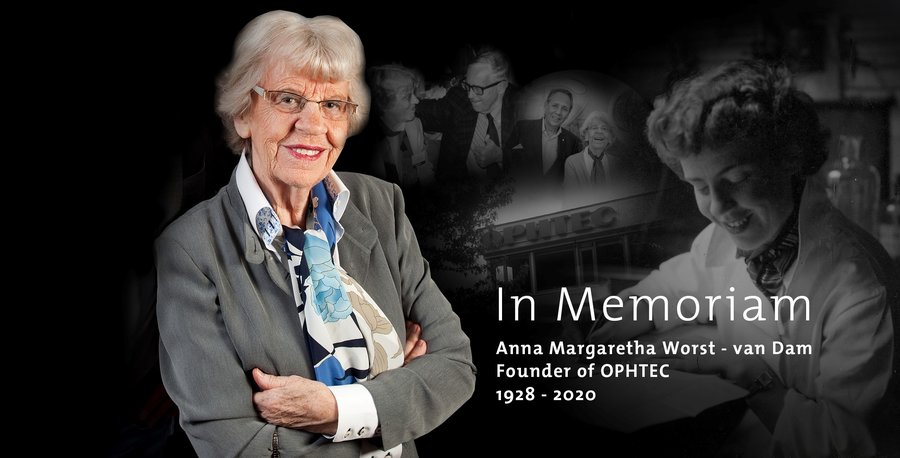Drops for dry eyes after cataract surgery
Contributed by Dr. Hyeck Soo Son.

Heidelberg 01 July 2020. We are pleased to see in the latest edition of the Journal of Refractive Surgery, our report on the treatment of evaporative dry eye disease in patients after their cataract surgery.
Son HS, Yildirim TM, Khoramnia R, Poompokawat P, Knorz MC, Auffarth GU. Semi-fluorinated Alkane Eye Drops Reduce Signs and Symptoms of Evaporative Dry Eye Disease After Cataract Surgery. J Refract Surg. 2020;36(7):474-480. DOI:10.3928/1081597X-20200519-01
What we did
The primary cause of evaporative dry eye disease is Meibomian gland dysfunction. Patients often have symptoms such as epiphora, foreign body, or burning sensation. Eye surgery, such as cataract surgery, is known to worsen dry eye symptoms due to postoperative inflammation. Postsurgical aggravation of ocular surface integrity may not only lead to worse visual outcomes, but also the instability of postoperative refraction, perception of halo and glare, and reduced quality of life.
We conducted a prospective, single-center, open-label clinical trial in post-surgery cataract patients with evaporative dry eye disease. We aimed to evaluate the efficacy and tolerability of new eye drops that are composed of a novel, lipophilic tear supplement, made by URSAPHARM GmbH, Saarbruecken, Germany. The eye drops are used as a postoperative ocular surface treatment.
EvoTears®
Containing 100% perfluorohexyloctane, an aliphatic, semi-fluorinated hydrocarbon - EvoTears is chemically, physically, and physiologically inert. Due to its complete aqueous-free nature, it does not promote microbial growth, nor does it need preservatives. It demonstrates fine spreading properties, and restores the lipid layer of the tear film, preventing excessive evaporation of the aqueous-mucous layers.
Our patients
In a total of 40 patients, EvoTears was prescribed four times daily for five weeks and administered 15 minutes after the standard postoperative topical anti-inflammatory regimen. The primary endpoint was the change in tear break-up time (TBUT). We also had secondary endpoints that included evaluation of the subjective symptoms using the Symptom Assessment in Dry Eye (Visual Analogue Scale (VAS)) questionnaire. We checked corrected distance visual acuity (CDVA), slit-lamp examination, intraocular pressure, and Schirmer’s test at 1 day, 1 week, and 5 weeks postoperatively. At 5 weeks postoperatively, physicians and patients evaluated the tolerability and efficacy of EvoTears.
“Impeccable” results
After 5 weeks, we observed a statistically significant increase in tear break-up time (TBUT) from 6.8 (preoperative) to 14 seconds (p<0.001). We saw a statistically significant decrease in the total corneal staining score from 3.53 (preoperative) to 2.36 (p<0.001). The mean CDVA improved from 0.41 (preoperative) to 0.14 logMAR (p<0.001). There was a statistically significant decrease in all scores from the VAS questionnaire at 5 weeks postoperatively. Schirmer’s test did not show any statistically significant change (p=0.150). The bar charts in the following tables, summarise our results.


The new eye drops demonstrated a good safety profile. All except one patient rated the tolerability as “impeccable”, whereas all physicians rated its tolerability as either “impeccable” or “acceptable.” Also, 89.7% of physicians rated the efficacy of the drops as “impeccable” or “acceptable:”
Safe and effective
EvoTears proved to be effective in treating patients with evaporative dry eye disease after cataract surgery. Both the patients’ and physicians’ assessment indicated high tolerability and a reliable safety profile, suggesting its suitability in the postoperative management of the ocular surface in patients with dry eye.
Acknowledgments
URSAPHARM GmbH supported this study, Clinical Trial Number (EUDAMED): CIV-16-12-017924. The authors declare they have no financial interest in the products mentioned here, and the company had no role in the collection of clinical data and the conduct of this research.
How to cite this publication:
Son HS, Yildirim TM, Khoramnia R, Poompokawat P, Knorz MC, Auffarth GU. Semi-fluorinated Alkane Eye Drops Reduce Signs and Symptoms of Evaporative Dry Eye Disease After Cataract Surgery. J Refract Surg. 2020;36(7):474-480. doi:10.3928/1081597X-20200519-01



 Supplementary IOL calcification
Supplementary IOL calcification